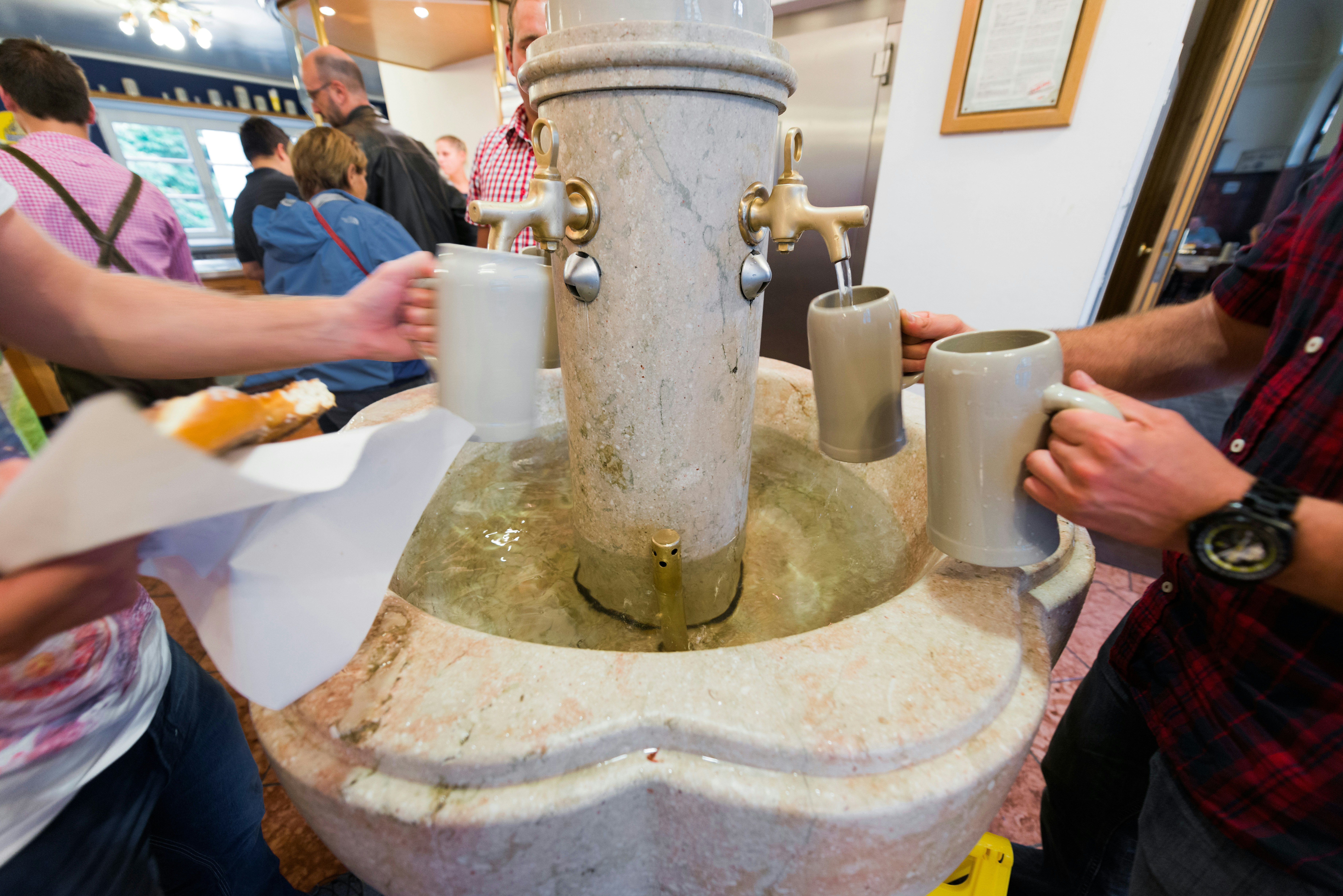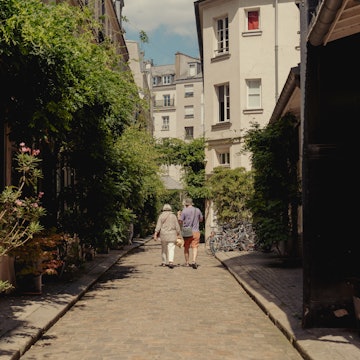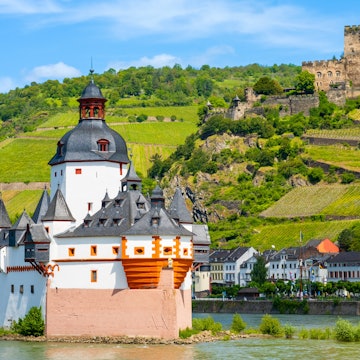

Salzburg, Austria. Kanuman/Shutterstock
Salzburg is known for its baroque palaces, lavish concert halls, masterpiece-packed art galleries and fancy hotels, so it might not be the first city you consider for a budget vacation. But with some careful planning you can experience Austria’s Alpine capital for very little.
It is no cliché to say that the best things in Salzburg are free: even high culture doesn’t cost the earth here. You can explore the UNESCO-listed baroque plazas, churches and abbeys in the Altstadt (Old Town), hike wooded hills that gaze dreamily toward the not-so-distant Alps or watch students perform classical music for nichts (nothing).
Here are the top 10 tips for budget travel in Salzburg.

Visit Salzburg during the off season
Salzburg has two peak seasons. During the summer holidays (July and August), the city gets swamped, reaching bursting point during the Salzburg Festival, when even standard rooms are rare. Rates go through the roof and crowds are large. In December, when the city brims with Christmas markets and festival sparkle, it can get busy and expensive too.
To save euros, come in spring or autumn for cheaper flights, lower room rates and far fewer crowds.
Book budget flights and train tickets in advance
A number of budget airlines (Ryanair and easyJet among them) fly to Salzburg, and you can snag some terrific deals if you dodge the high season and book well ahead. When prices spike, consider flying to bigger cities that can easily be reached by train, such as Vienna (2½ hours) and Munich (1½ to 2 hours).
If booked well in advance, ÖBB Sparschiene tickets can be an absolute steal; you can travel to Vienna for as little as €20 (US$23), for instance, as long as you are flexible about trains and times. The nightjet night train is a good option for speeding to 25 cities in Central, Southern and Eastern Europe. Tickets go for as little as €30 (US$34).
Choose budget accommodations
A simple Google search for hotels in Salzburg can be frightening – many of the hotels in the center are luxe four- or five-star pads, with price tags to match. As a rule of thumb (with precious few exceptions), if you want to save money, avoid the Altstadt. Prices leap an extra 10% to 20% during the Salzburg Festival.
Moosstrasse, a quick bus ride south of town, has a flurry of charming, inexpensive, family-run B&Bs, where you can often snag a double for as little as €80 (US$91) during the low season, with a hearty breakfast thrown in. These include Haus Ballwein, Haus am Moos and Haus Steiner.
In the warmer months, you could pitch a tent instead. Just north of town, there are a couple of scenic options, including Salzburg Panorama-Camping-Stadtblick, with a cycle lane making it possible to roll into town in just 15 minutes.
If you prefer a proper bed, Salzburg has a couple of good hostels, among them A&O Salzburg Hauptbahnhof, with coolly modern digs in a revamped bread factory near the main train station, and hip-and-happening Yoho Salzburg, with pluses like cheap bike rental (€10/US$11) and free daily screenings of The Sound of Music.

Walk, cycle or take public transit
Split in two by the Salzach River, Salzburg’s sight-crammed Altstadt is a joy to roam on foot (and indeed, this is the only way to really get a feel for its pedestrianized backstreets). Unless you are venturing further afield, you need never set foot in a bus or train once you’ve arrived. A reliable network of cycle paths also makes this one of Austria’s most bike-friendly cities, and the routes that run along the river are a dream, giving you a seamless transition between the city and the mountains. Rent your wheels at aVelo for €25 (US$29) per day.
As you might expect in such an efficient land, getting around by public transport (SVV) is a breeze and very affordable. It’s always cheaper to buy tickets online or at the ticket machine than on board. If you’re planning on zipping about town, a Tageskarte day pass for €4.90 (US$5.60) for the core town tends to be a better value than buying single tickets at €2.40 (US$2.70) each.

Find a free city tour
If it’s your first time in Salzburg, Free Walking Tour Salzburg is a terrific way to get your bearings, contextualize the city and tick off some of the trophy sights. Tours last 90 minutes and whizz past major landmarks such as Schloss Mirabell and Residenzplatz. Guides are clued-up, fun and full of interesting stories.
While technically the tours are free, tipping your tour guide is a good practice. See the website for time slots and bookings. The meeting point is the Spirit of Mozart sculpture near Staatsbrücke.
Save with the Salzburg Card
If you’re planning on visiting all the big-hitters, you’ll save loads by investing in an all-in-one Salzburg Card, which gives you unlimited use of public transport, entry to all the main sights – from the lavish state rooms of the Residenz to the city-in-a-nutshell Salzburg Museum and clifftop fortress Festung Hohensalzburg. The card also gets you a cable-car ride up to the Alps at Untersberg. You’ll save time too: simply flash your card to skip queues. During peak travel months, the 24-/48-/72-hour card costs €31/40/46 (US$35/46/53); children aged six to 15 pay half price

Find high culture on the cheap
Salzburg punches high culturally and you can tune into some of its most memorable experiences for very little. Mozart, you say? Make for the Mozarteum University, where it’s free to attend a variety of events, including study concerts featuring incredibly talented music students. Opera and ballet? At the grand 18th-century Landestheater nearby, students who are under 30 can take advantage of last-minute tickets sold at the box office 30 minutes before performances, which go for just €9 (US$10).
Even summer’s colossal Salzburg Festival doesn’t have to be expensive as long as you aren’t picky about the performance. Order standing seats (costing roughly between €10–30/US$11–34) as soon as they go on sale in mid-January, or feel the buzz watching free screenings of opera on Kapitelplatz, as locals drift past dressed up to the nines.

Enjoy a pint and a slice of history
Back in the 17th century, Salzburg’s Augustinian monks loved their home brews and a bit of a party. Their legacy is the Augustiner Bräustübl, founded in 1621. With its vaulted, beamed hall and 1000-seat beer garden sprawling lazily under the chestnut trees, this is a cracking spot to soak up a real flavor of Salzburg life. Fill your tankard at the foyer pump and visit the good-value snack stands for beer grub including Stelzen (ham hock), pork belly and giant pretzels.
Browse market stalls for picnic fixings
Sun’s out? That’s your cue to join the hungry Salzburger at the Grünmarkt on Universitätsplatz for picnic goodies: from fruit and veg to ham and cheese from the Alps, and pretzels as big as your head. For a sourdough loaf fresh from a wood-fired oven, nip into nearby Stiftsbäckerei St Peter, a 700-year-old bakery that’s part of the abbey complex of the same name.

Go out for lunch not dinner
You can save a small fortune by taking advantage of the lunchtime Tagesmenü (fixed meal of the day) served at most places. A two-course lunch at many restaurants and bistros will set you back as little as €10 (US$11), a fraction of what it costs to eat out in the evening.
Tucked down lovely Churfürststrasse in the heart of the Altstadt, university café M-Café Toskana offers one of the best deals in town, with its courtyard setting and wallet-friendly lunch starting at €8.90 (US$10) or €7.90 (US$9) if you go for the vegetarian option.
Daily costs in Salzburg
Hostel room: Private room from €107 (US$122); dorm from €31 (US$35)
Basic room for two: €76 (US$87) and up
Self-catering apartment: €110 (US$126) and up
Public transport ticket: €2.40 (US$2.70) each or €4.90 (US$5.60) for 24-hour pass
Coffee: €3–5 (US$3.40–5.70)
Dinner for two: €35 (US$40) in a pub; €65 (US$74) and up in a mid-range restaurant
Pint of beer at the pub: €4 (US$4.60)
















